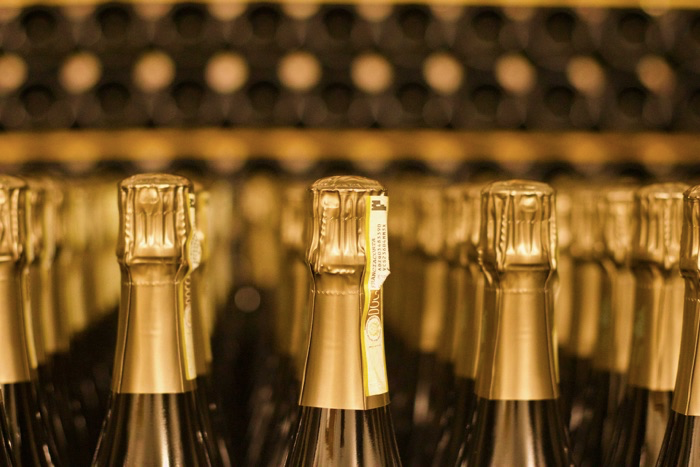Methods of Making Sparkling Wine
Discover the diverse methods employed in making sparkling wine. Elevate your appreciation for bubbly delights.

There are several methods used in sparkling wine production, each with its own unique characteristics and flavour profiles. Here, we will explore some of the most common methods of making sparkling wine.
Traditional method
The traditional method of making sparkling wine is known as méthode champenoise or méthode traditionnelle. This process involves a second fermentation that takes place in the bottle, giving the wine its effervescence. The grapes used for this method are typically Chardonnay, Pinot Noir and Pinot Meunier.
To begin this process, the grapes are harvested and pressed to extract their juice. Once the juice has been extracted, it is fermented in stainless steel tanks or oak barrels to create a still wine base. The next step is to blend different batches of still wines to achieve a specific flavour profile before adding yeast and sugar for a second fermentation.
The bottles are then sealed with crown caps and aged on their sides in cool cellars for at least 15 months. During this time, carbon dioxide builds up inside the bottles due to secondary fermentation which creates bubbles in the wine.
Transfer method
The transfer method of sparkling winemaking is a process that involves transferring the base wine from the bottle to a large tank, where it undergoes secondary fermentation. The secondary fermentation process allows the wine to produce carbon dioxide gas, which is trapped in the bottle and creates the bubbles associated with sparkling wines.
Once secondary fermentation is complete, the wine is transferred back into individual bottles. During this process, all sediment is removed from the bottom of each bottle to ensure clarity and quality. This step also helps to prevent unpleasant flavours or aromas from developing in the finished product.
An advantage of using this method compared to other methods, such as traditional or Charmat methods, is that it allows greater control over sediment levels while maintaining high-quality flavour and aroma profiles.

Charmat method
The Charmat Method is a popular technique used to create sparkling wines all over the world. It was developed in the early 20th century by French winemaker Eugene Charmat and is also known as Méthode Tank or Méthode Martinotti.
This method is preferred to the traditional champagne method because of its efficiency, affordability and ability to produce consistent results.
The Charmat Method involves a secondary fermentation that takes place in large pressurised tanks rather than individual bottles. After primary fermentation, sugar and yeast are added to the base wine in these tanks.
The carbon dioxide created during this second fermentation process dissolves in the wine giving it its characteristic effervescence. Once finished, the wine is filtered, stabilised and bottled under pressure.
This efficient production method allows for faster processing times of sparkling wines to meet consumer demand while keeping production costs lower than traditional methods.
Pét-Nat
The Pét-Nat method, short for Pétillant Naturel, is a traditional approach to sparkling wine making. This winemaking technique dates back to the 16th century and was originally developed in the Loire Valley of France.
Unlike other methods of producing sparkling wine such as champagne or prosecco, this method is less complicated and requires minimal intervention.
The process involves bottling the wine during fermentation before all the conversion of sugar to alcohol can be completed. In this way, CO2 is trapped inside the bottle as a natural result of the yeast converting the sugar into alcohol.
The resulting wine has less bubbles than those made by other methods, but with a unique flavour profile that many people appreciate. It generally has higher acidity levels with more earthy flavours and aromas compared to other sparkling wines.
In conclusion, there are several methods of making sparkling wine, each with its own unique characteristics and flavours. The choice of method depends on the desired result and production capabilities. Whether you prefer the elegance of Champagne or the simplicity of carbonated wine, there is a method to suit every palate. Welcome to explore the world of sparkling wine!
You May Be Also Interested in
- Ancestral bubbles
- What is Cava?
- Cava Food Pairing
- 6 Tips for Selecting the Right Cava Bottle
- What grapes are used to make cava and champagne?
- When and how to drink cava
- The 20 best rated cava brands by our customers
- 15 unbeatable Brut Nature wines in terms of price/pleasure ratio